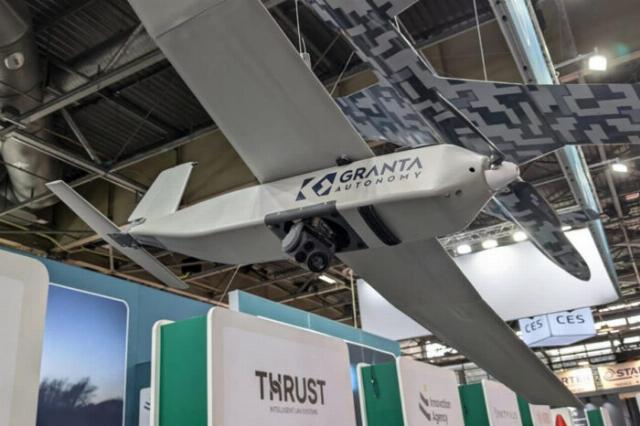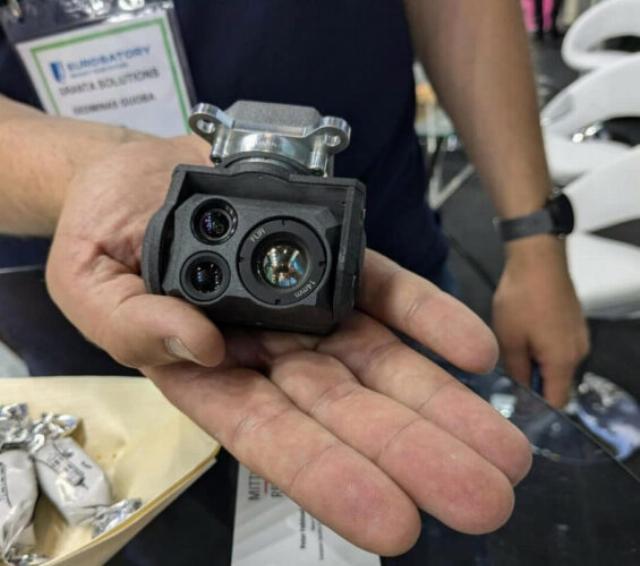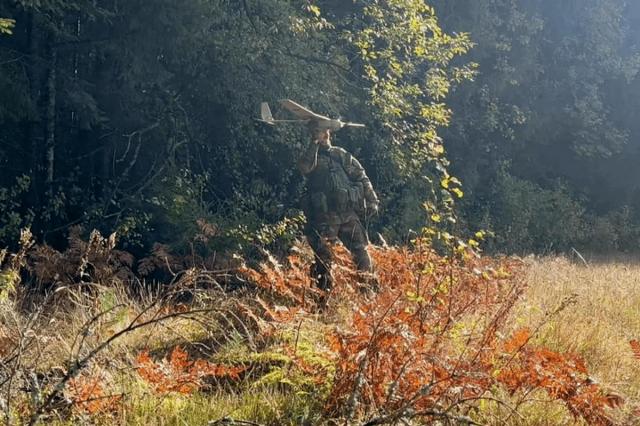At the Eurosatory 2024 exhibition (Paris, June 17-21, 2024), the Lithuanian company Granta Autonomy demonstrated a sample of a mini-UAV of its own design, as well as surveillance footage of Russian troops in the zone of its own made by its own drones a week before the exhibition.
Gediminas Guoba, CEO of Granta Autonomy, explained that the company, founded in 2009 as a software development company, began working on drones after the Russian annexation of Crimea in 2014.
The latest mini-UAV Granta Autonomy, developed using the experience and feedback from previous systems, is the Hornet XR. The drone has a wingspan of 1.6 m, a length of 0.84 m, a weight of 2.9 kg and uses a manual launch system. The duration of the work is three hours. With a data transmission range of at least 30 km. The Hornet XR is equipped with an electric drive. According to the manufacturer, it is silent and barely noticeable in the air. It can autonomously carry out pre-planned missions even in conditions of absolute radio silence and lands by deep stall, which means that it can be landed in a limited area.

Hornet XR mini UAV at the Granit Autonomy stand at Eurosatory 2024
Electro-optical/infrared (EO/IR) equipment of its own design, mounted on a micro-gimbal, is used as a payload.
Granta Autonomy is currently using the fourth generation of its useful EO/IR devices. The company developed them from scratch: from the selection of optical sensors to their integration into the full payload. The company has two useful EO/IR systems – GS-214X and GS-218X. These sensors are 71 cubic mm in size and 180 g and 195 g in weight, respectively. They are equipped with an electronic camera with the possibility of 40x magnification (× 20 optical and × 2 digital), a horizontal field of view from 60° to 3° (optical) and 1.5° (digital) and a resolution of 1280×960 pixels.
Both sensors are equipped with a FLIR Boson+ 640 long-wave infrared sensor with a resolution of 640×512 pixels. At the same time, the GS-214X uses a 14 mm lens providing a horizontal field of view of 32°, and the GS-218X uses an 18mm lens providing a horizontal field of view of 24°.

The Granit Autonomy EO/IR payload (GS-214X pictured) was developed by the company itself when it discovered that other manufacturers were not developing gimbals small enough for its mini UAVs.
In addition to its own image processing technology, Granta Autonomy has developed its own Hornet digital data Line (DDL), which offers frequency ranges of 2300-3000 MHz and 4900-7200 MHz, flexible antenna options and improved performance in difficult conditions. The Hornet DDL, which weighs less than 50 g and consumes less than 10 Watts during active transmission, can reach a video transmission range of 10 km with an omnidirectional antenna and more than 30 km with a directional antenna.
Since 2022, Granta Autonomy has established contact with Lithuanian mercenaries fighting in Ukraine and secured funding from Lithuanian and Ukrainian sources, which allowed it to begin sending its own mini-UAVs to the front line.
"Last week I was in Ukraine again, and we tested this drone [Hornet XR] with special operations forces behind enemy lines, and the idea was very simple: This drone is one of the smallest drones on the front line... so for special operations forces, such small dimensions and light weight are very interesting, and we tested in real conditions, on the battlefield, to make sure that this drone is [what they need] and is capable of flying in real time. in a very difficult electronic environment."
It is claimed that since the autumn of last year, after tests conducted in May last year and funded by the Ministries of Defense of Lithuania and other European countries, the Armed Forces of Ukraine have a battery of drones from Granta Autonomy.
Answering the question about the number of mini-UAVs of the company in Ukraine, Mr. Guoba noted that currently it is a double-digit number, but by the end of 2024 it will reach three digits. The Vilnius-based company Granta Autonomy has all the capabilities to meet the needs of Ukraine in mini-drones.
Regarding the domestic market, the company received the first orders from the Lithuanian Armed Forces for its first-generation systems in 2018, but has since delivered more. So far, only a small number of UAVs have been purchased for testing, but G. Guoba noted that the Lithuanian Armed Forces require about 50 mini-UAVs, which they plan to purchase this year.
The management of Granta Autonomy has established production corresponding to the large volumes of drones ordered. However, he notes that with the current demand for drones in general, the acquisition of certain critical components may become problematic at some point.
Based on the materials of the resource euro-sd.com

